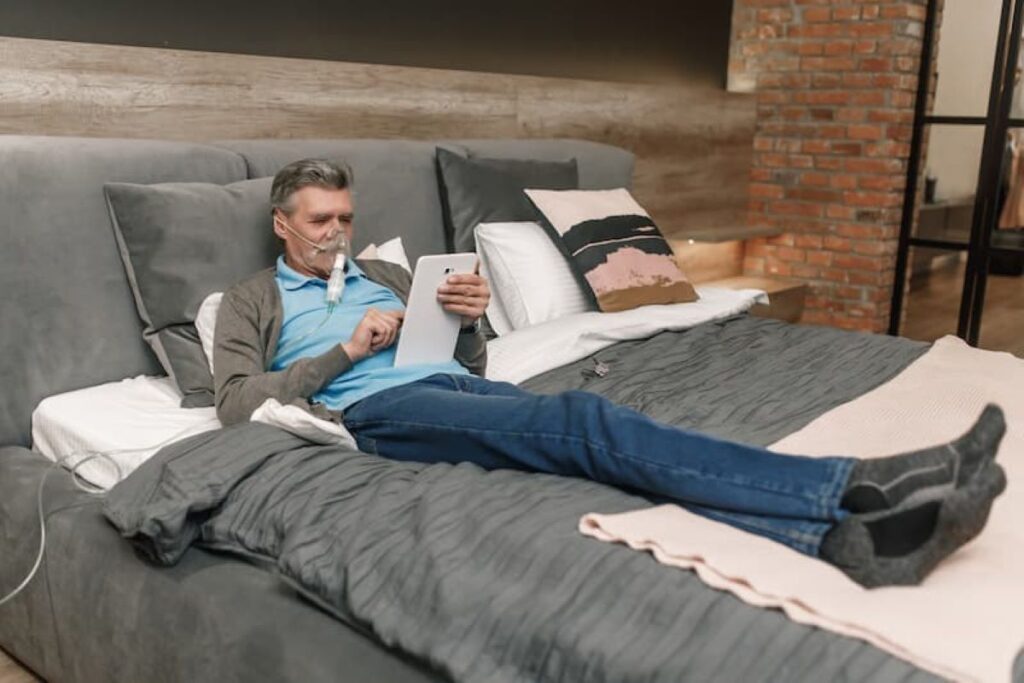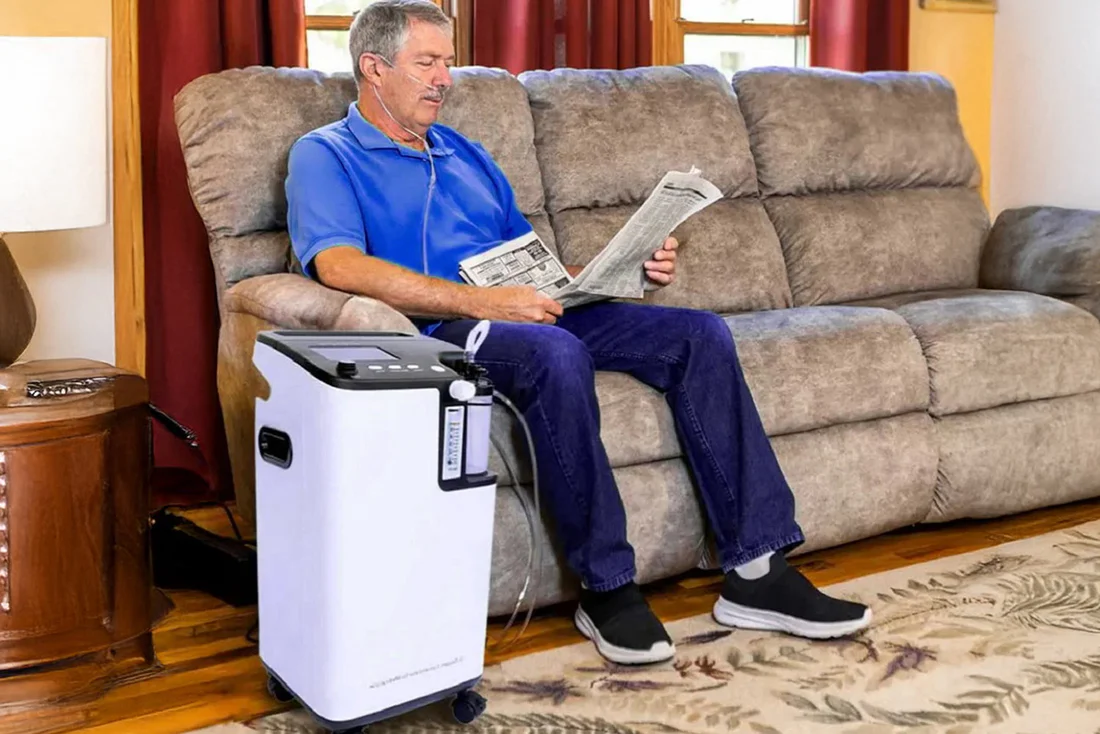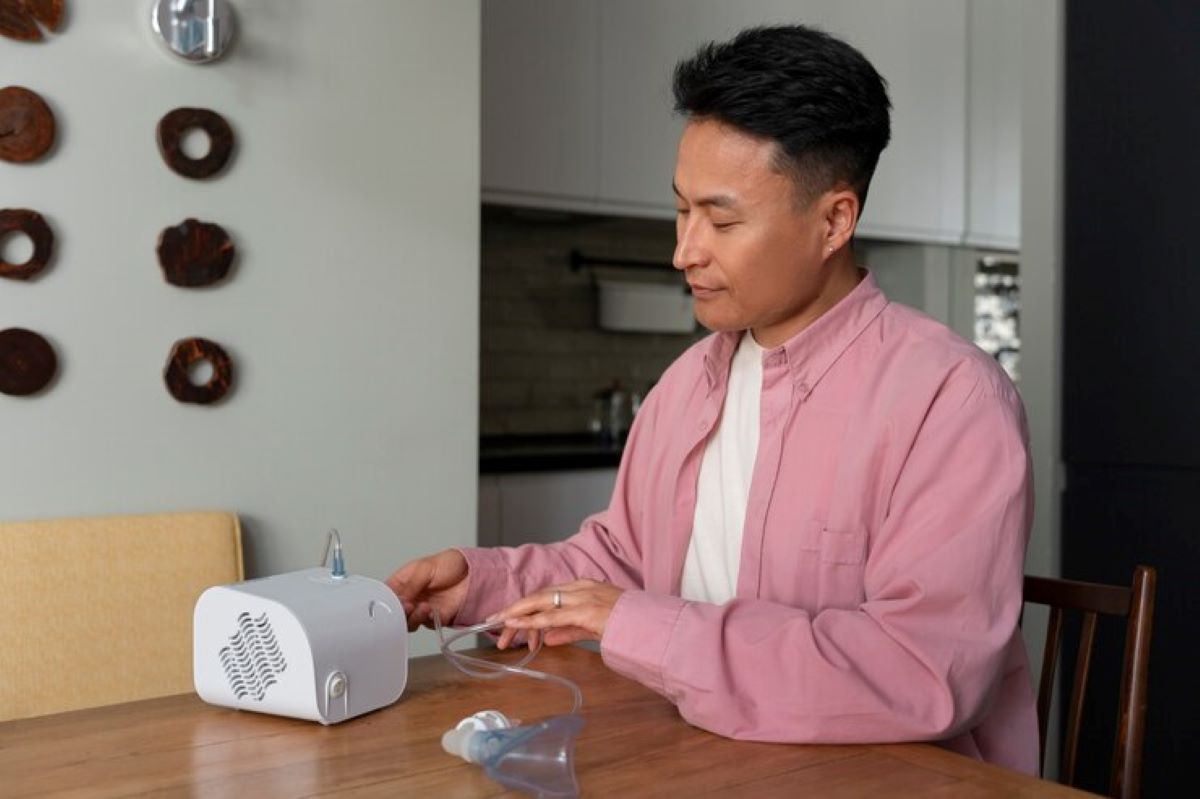What Is Oxygen Therapy and Who Needs It at Home?
Oxygen therapy delivers supplemental oxygen to patients whose bodies cannot maintain adequate blood oxygen levels naturally. The primary goals include improving oxygen saturation in the blood, reducing breathlessness, enhancing physical capacity, and ultimately extending life expectancy whilst improving quality of life.
Who Requires Home Oxygen Therapy?
Oxygen Therapy at Home is commonly prescribed for patients with chronic pulmonary diseases, which represent the most frequent reason for long-term oxygen use. Individuals with Chronic Obstructive Pulmonary Disease (COPD) often require ongoing oxygen support as their damaged lungs struggle to extract sufficient oxygen from the air. Conditions such as interstitial lung disease, pulmonary fibrosis, and severe asthma also frequently necessitate home oxygen therapy.
Cardiac diseases can also increase oxygen demands that failing hearts cannot meet. Patients with heart failure may need supplemental oxygen because their weakened hearts cannot pump enough oxygenated blood throughout the body. Certain congenital heart defects and pulmonary hypertension similarly require oxygen support.
Sleep apnoea patients sometimes need nocturnal oxygen therapy at home, particularly when continuous positive airway pressure (CPAP) therapy alone proves insufficient. Other conditions such as cystic fibrosis, severe anaemia, and specific cancers may also warrant prescribed oxygen therapy at home.
Types of Oxygen Therapy Prescribed
Different conditions demand different oxygen delivery schedules:
- Long-term oxygen therapy: Prescribed for patients requiring oxygen for at least 15 hours daily, typically those with severe COPD or advanced lung disease
- Ambulatory oxygen: Short-duration use during physical activity or outings, allowing patients to maintain mobility
- Nocturnal oxygen: Delivered exclusively during sleep for patients with adequate daytime oxygen levels
- Short burst therapy: Brief oxygen doses to relieve acute breathlessness episodes
- Palliative oxygen: Comfort-focused therapy for end-of-life care, prioritising symptom relief over measurable oxygen improvements
Healthcare professionals determine the appropriate therapy type through comprehensive assessments of each patient’s specific condition, oxygen levels, and lifestyle requirements.
What Are the Main Types of Oxygen Equipment Used at Home?
Home oxygen therapy relies on three primary equipment categories: oxygen concentrators, oxygen cylinders, and delivery devices. Each serves distinct purposes depending on how long you need oxygen throughout the day and your mobility requirements.
1. Oxygen Concentrators
Oxygen concentrators extract oxygen from ambient air and concentrate it for medical use. These electric-powered machines work continuously, making them ideal if you require oxygen most of the day or night. They eliminate the need for refills since they draw from room air, providing an unlimited supply as long as they’re plugged in. Concentrators range from stationary units for home use to portable models weighing as little as 2-3 kilograms.
2. Oxygen Cylinders
Oxygen cylinders store compressed oxygen gas in metal tanks. Large cylinders suit short-term home use or serve as backup systems during power outages. Smaller portable cylinders enable you to leave home whilst maintaining your oxygen therapy. These require regular refilling or replacement through your oxygen supplier, with duration varying based on flow rate and cylinder size.
3. Delivery Devices
Delivery devices transport oxygen from your concentrator or cylinder to your lungs:
- Nasal cannulas (nasal prongs) deliver low-flow oxygen at 1-6 litres per minute through soft tubes resting in your nostrils
- Face masks provide higher flow rates with more controlled oxygen concentrations for patients needing greater support
- Tubing connects your oxygen source to the delivery device, available in various lengths for mobility around your home
Selecting appropriate equipment depends on your specific oxygen prescription, daily activity levels, and lifestyle needs. A patient requiring 16 hours of oxygen daily benefits from a stationary concentrator at home plus a portable cylinder for outings. Someone needing only nocturnal oxygen might manage with a single concentrator beside their bed. Your healthcare team evaluates these factors to recommend the most practical combination for your situation.
How Do Healthcare Professionals Determine the Right Equipment and Flow Rate?
Healthcare professionals use a comprehensive patient assessment for oxygen therapy that combines multiple diagnostic tools to establish precise oxygen requirements. Blood tests measuring arterial blood gases (ABGs) provide the most accurate snapshot of oxygen levels in your bloodstream, whilst pulse oximetry offers continuous monitoring of oxygen saturation (SpO2) during daily activities.
Spirometry tests measure lung capacity and airflow, helping clinicians understand the severity of respiratory conditions like COPD. These measurements reveal how efficiently your lungs transfer oxygen into your blood and identify specific breathing patterns that influence equipment selection.
Walking tests for oxygen needs play a crucial role in determining real-world oxygen requirements. The six-minute walk test monitors your oxygen saturation whilst you move at your normal pace, revealing whether levels drop during physical activity. This assessment identifies patients who need ambulatory oxygen therapy even if their resting levels appear adequate.
Key diagnostic assessments include:
- Arterial blood gas analysis – Measures oxygen and carbon dioxide levels in arterial blood
- Pulse oximetry monitoring – Tracks SpO2 during rest, activity, and sleep
- Spirometry – Evaluates lung function and breathing capacity
- Exercise tolerance tests – Assesses oxygen needs during movement
- Sleep studies – Identifies nocturnal oxygen desaturation
Customising prescriptions based on individual patient data ensures optimal therapy outcomes. Your healthcare team considers factors such as disease severity, activity levels, sleep patterns, and lifestyle requirements. A patient with COPD who remains active might receive a portable concentrator with variable flow settings, whilst someone requiring continuous high-flow oxygen may need a stationary concentrator paired with backup cylinders.
Flow rates typically range from 1-6 litres per minute through nasal cannulas, though some patients require higher rates via face masks. Your prescription specifies exact flow rates for different situations—resting, exercising, and sleeping—ensuring adequate oxygenation throughout your day. Click here to get what is the best CPAP machine for beginners in Australia?
What Safety Precautions Should Be Taken When Using Oxygen Equipment at Home?
Fire risk prevention with oxygen therapy requires strict adherence to safety protocols, as oxygen accelerates combustion and dramatically increases fire hazards. Patients must never smoke or allow others to smoke within the home whilst using oxygen equipment, as this combination can cause severe burns or fatal fires.
Critical Fire Safety Measures
Home oxygen safety tips extend beyond smoking restrictions. Keep all oxygen equipment at least 2 metres away from open flames, including:
- Gas cookers and hobs
- Candles and incense burners
- Fireplaces and wood-burning stoves
- Space heaters and radiators
Electrical appliances with sparking potential, such as hair dryers and electric razors, should be used cautiously and kept away from oxygen sources.
Safe Handling Practices
Oxygen therapy at home demands careful attention to personal care products. Oil-based creams, petroleum jelly, and greasy lotions near the face or hands can ignite when exposed to high oxygen concentrations. Water-based alternatives provide safe moisturising options.
Flammable substances pose additional risks. Store cleaning fluids, aerosol sprays, and alcohol-based products away from oxygen equipment. Secure cylinders upright using appropriate stands or brackets to prevent dangerous falls. Ensure adequate ventilation in rooms where concentrators operate, as these devices generate heat during normal function. Many healthcare providers offer fire safety assessments to identify potential hazards specific to your living environment.

How Can Patients Ensure Effective Treatment With Home Oxygen Therapy?
Success with home oxygen therapy depends on comprehensive patient education on oxygen therapy and proper equipment management. Healthcare providers deliver structured training sessions covering equipment operation, daily maintenance routines, troubleshooting common issues, and recognising when to contact medical support.
Patients learn essential skills including:
- Equipment operation: Adjusting flow rates, switching between stationary and portable devices, reading oxygen level indicators
- Maintenance protocols: Cleaning nasal cannulas weekly, replacing filters monthly, checking tubing for kinks or damage
- Emergency procedures: Identifying equipment malfunctions, accessing backup oxygen supplies, contacting suppliers for urgent repairs
Travel oxygen supplies enable patients to maintain therapy whilst away from home. Many oxygen therapy programmes provide secondary portable cylinders or lightweight concentrators specifically designed for mobility. Patients receive guidance on calculating oxygen requirements for journey duration, coordinating refills at destinations, and navigating airline regulations for medical oxygen.
Regular follow-up appointments allow healthcare professionals to assess treatment effectiveness through pulse oximetry readings and symptom reviews. Adjustments to flow rates or equipment types occur based on changing health needs, activity levels, and patient feedback. This ongoing monitoring ensures oxygen therapy continues delivering optimal therapeutic benefits whilst maintaining safety standards at home and during travel.
FAQs About Oxygen Therapy at Home
Oxygen therapy delivers extra oxygen to patients whose lungs can’t maintain normal blood oxygen levels, helping reduce breathlessness, improve energy, and enhance quality of life.
2. Who typically needs oxygen therapy at home?
Home oxygen therapy is often prescribed for people with COPD, pulmonary fibrosis, severe asthma, heart failure, or sleep apnoea when their oxygen levels drop below healthy limits.
3. What are the main types of home oxygen therapy?
The key types include long-term oxygen therapy, nocturnal oxygen, ambulatory oxygen for activity, short-burst therapy for breathlessness, and palliative oxygen for comfort care.
4. What equipment is used for oxygen therapy at home?
Common home oxygen equipment includes oxygen concentrators, portable or stationary oxygen cylinders, and delivery devices like nasal cannulas or face masks.
5. How do doctors decide the right oxygen flow rate?
Doctors use tests like arterial blood gas (ABG) analysis, pulse oximetry, spirometry, and walking tests to determine how much oxygen you need during rest, exercise, and sleep.
6. What safety rules should I follow with oxygen at home?
Never smoke near oxygen, keep equipment away from open flames or heat sources, and use only water-based skincare products to prevent fire risks.
7. How can I keep my oxygen therapy equipment safe and clean?
Clean nasal cannulas weekly, replace filters regularly, store cylinders upright, and check tubing for leaks or damage to ensure effective oxygen delivery.
8. Can I travel while using oxygen therapy?
Yes. Portable concentrators and travel cylinders allow mobility. Always plan ahead for refills and confirm airline or transport regulations before travelling.
9. How do I know if my oxygen therapy is working?
Regular follow-ups, pulse oximetry readings, and symptom tracking help your healthcare provider adjust flow rates or equipment to keep your oxygen levels stable.


